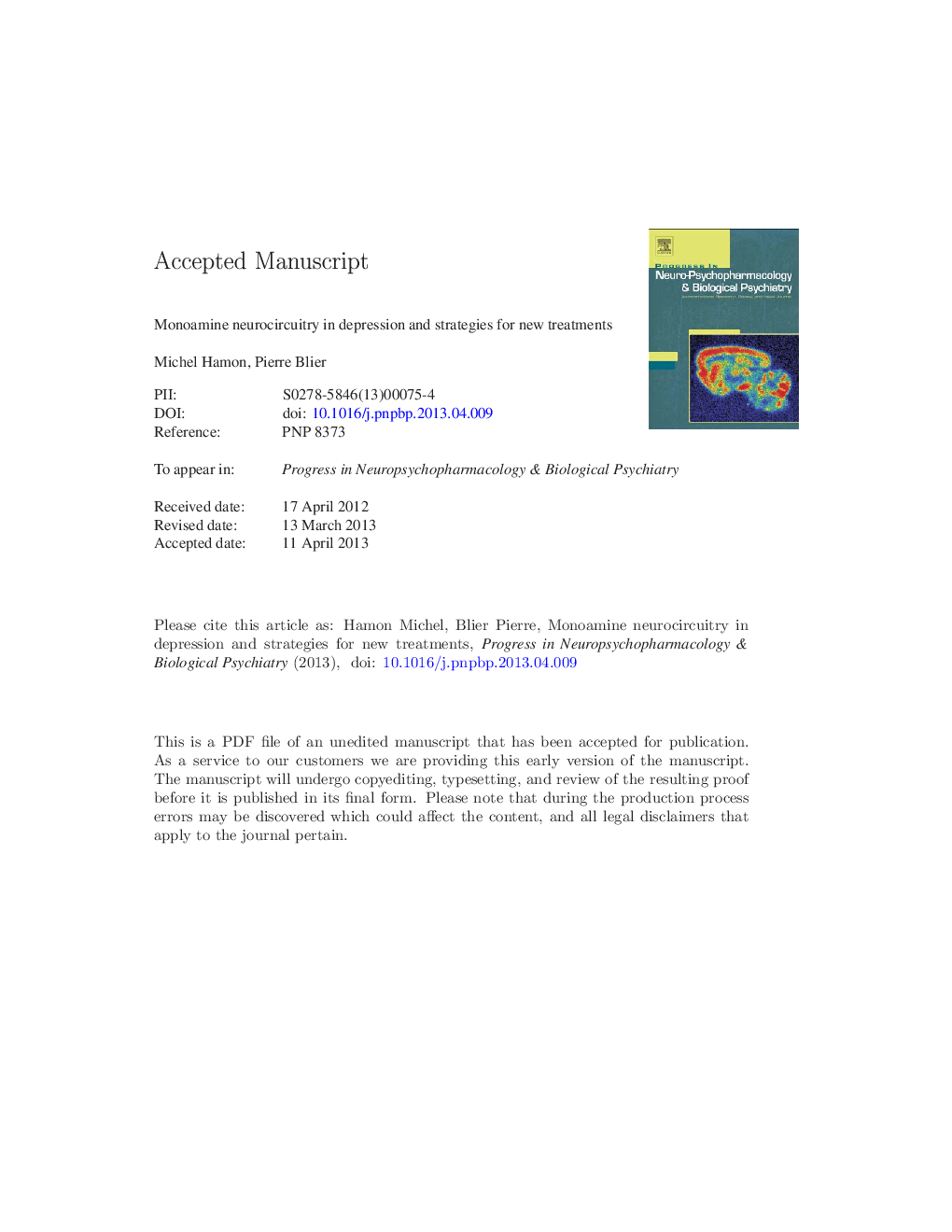| Article ID | Journal | Published Year | Pages | File Type |
|---|---|---|---|---|
| 5844837 | Progress in Neuro-Psychopharmacology and Biological Psychiatry | 2013 | 56 Pages |
Abstract
Extensive studies showed that monoaminergic neurotransmission that involves serotonin (5-HT), norepinephrine (NE) and dopamine (DA) exerts major influence on brain circuits concerned by the regulation of mood, reactivity to psychological stress, self-control, motivation, drive, and cognitive performance. Antidepressants targeting monoamines directly affect the functional tone of these circuits, notably in limbic and frontocortical areas, and evidence has been provided that this action plays a key role in their therapeutic efficacy. Indeed, at least some of functional changes detected by functional magnetic resonance imaging in emotion- and cognitive-related circuits such as the one involving limbic-cortical-striatal-pallidal-thalamic connections in depressed patients can be reversed by monoamine-targeted antidepressants. However, antidepressants acting selectively on only one monoamine, such as selective inhibitors of 5-HT or NE reuptake, alleviate depression symptoms in a limited percentage of patients, and are poorly effective to prevent recurrence. Thorough investigations for the last 30 years allowed the demonstration of the existence of functional interactions between 5-HT, NE and DA systems, and the identification of the specific receptors involved. In particular, 5-HT systems were shown to exert negative influence on NE and DA systems through 5-HT2A and 5-HT2C receptor- mediated mechanisms, respectively. On the other hand, complex positive and negative influences of NE system on 5-HT neurotransmission are mediated through αï¡1- and αï¡2-adrenergic receptors, respectively. These data provided a rationale for the design of new, multimodal, therapeutic strategies involving drugs acting not only at the “historical” targets such as the 5-HT and/or the NE transporter, but also at other molecular targets to improve their efficacy and their tolerability.
Keywords
norepinephrine transporterNMDAN-methyl-d-aspartateVTADRNHAM-Dtph2SSRIsOFCDATMDDPRLTCAsReHoMADRSROIQIDS-SRCRHNRIsSNRIs5-HTselective norepinephrine reuptake inhibitors5-hydroxytryptamine, serotoninBDNFMAOIsSustained releaseMajor depressive disorderMRIDopamine transportertryptophan hydroxylase-2Magnetic resonance imagingfunctional magnetic resonance imagingfMRIPositron emission tomographyNETtricyclic antidepressantsCNSDopamineSERTserotonin transportercentral nervous systembrain derived neurotrophic factororbitofrontal cortexMontgomery-asberg depression rating scaleHamilton Depression Rating ScaleRegions Of Interestselective serotonin reuptake inhibitorsMonoamine oxidase inhibitorsHPAnorepinephrinedorsal raphe nucleusRegional homogeneitycorticotropin-releasing hormonePETProlactinSingle nucleotide polymorphismSNPcatecholaminesSerotonin receptors
Related Topics
Life Sciences
Neuroscience
Biological Psychiatry
Authors
Michel Hamon, Pierre Blier,
